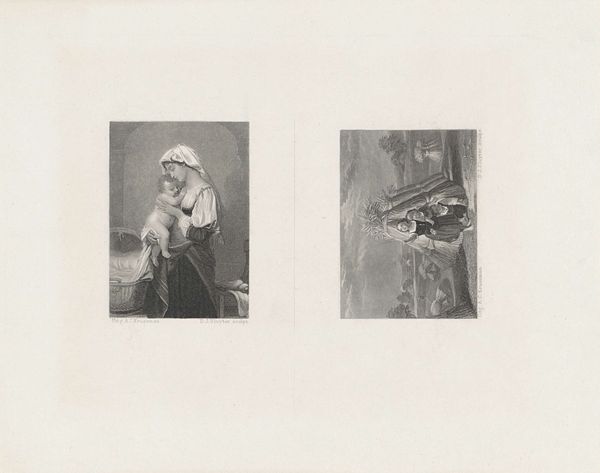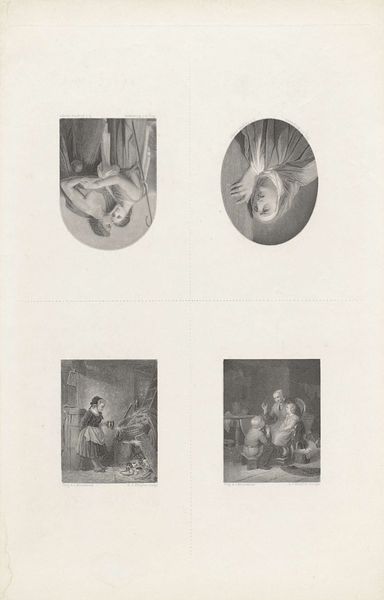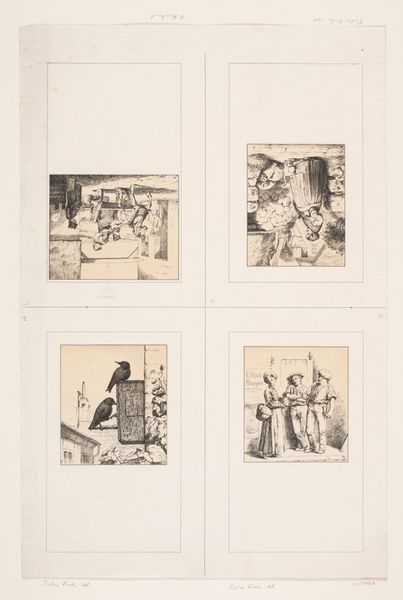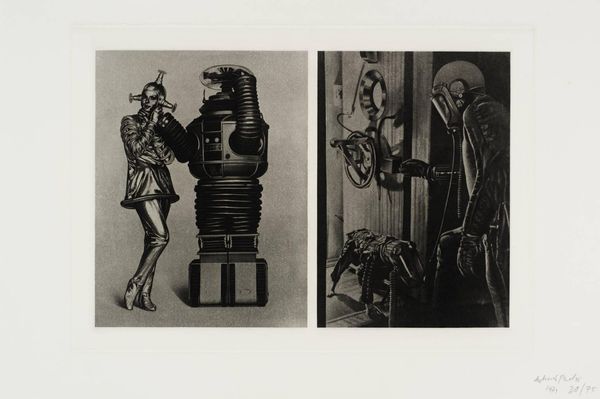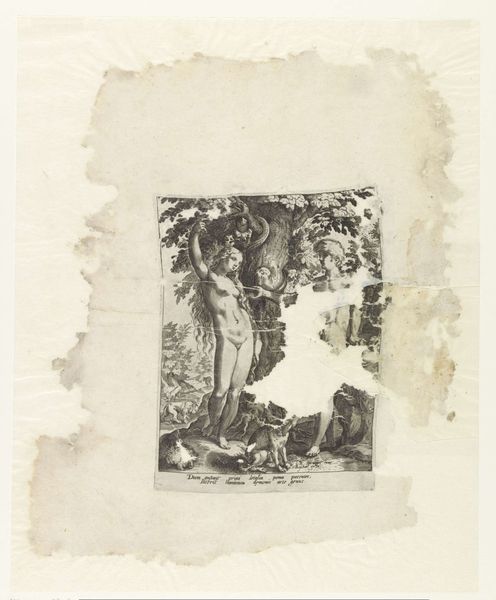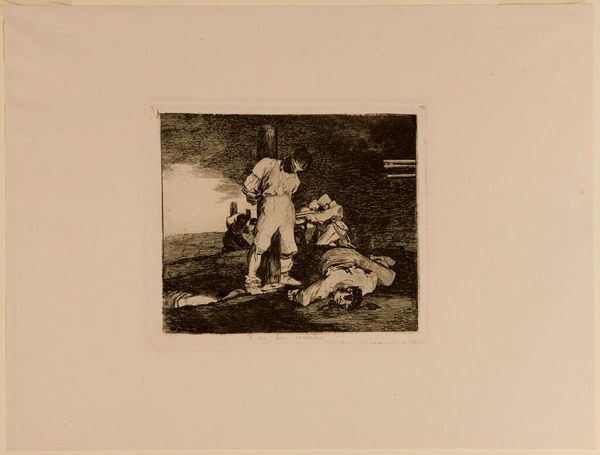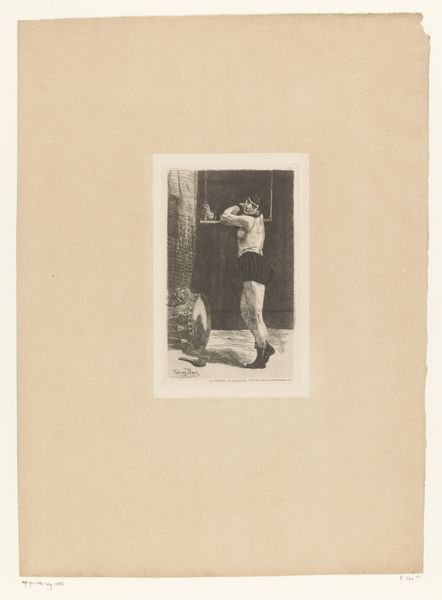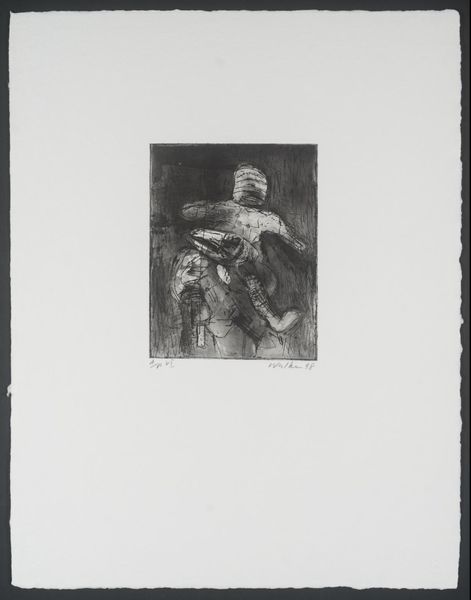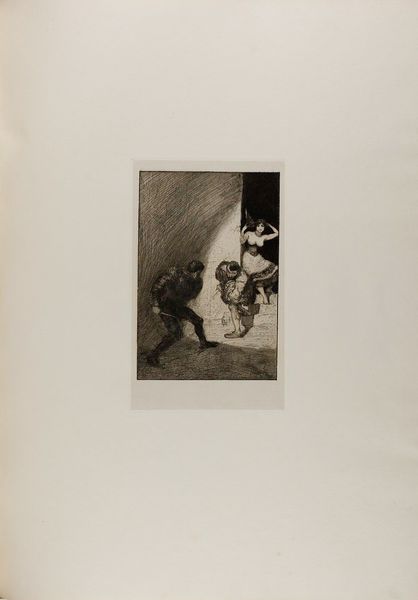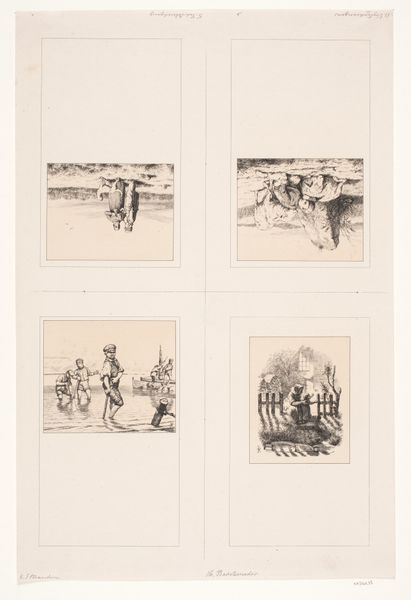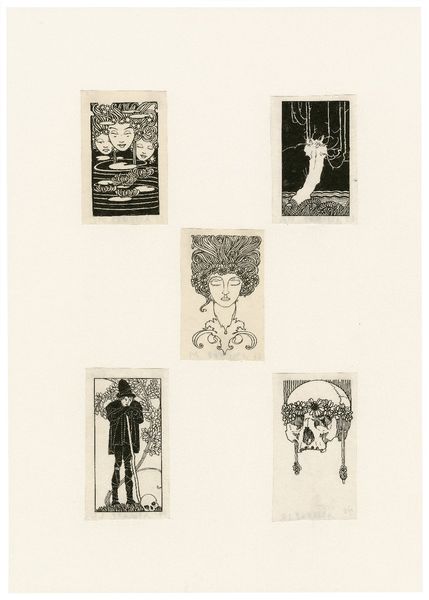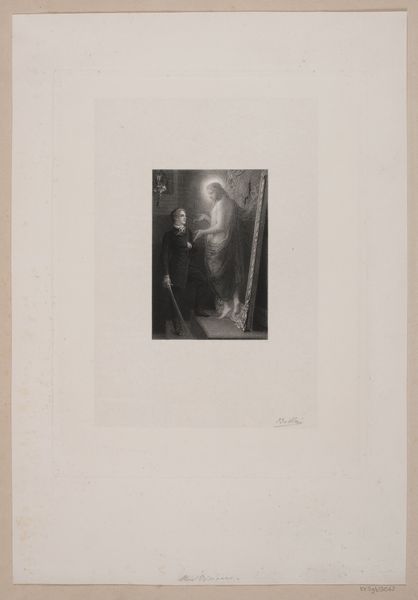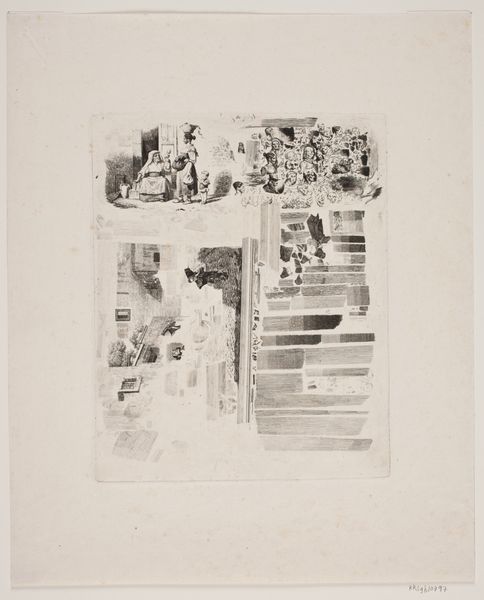
Biddende jonge vrouw - Muizenfeest - Smoezend koppel - Zeilscheepjes 1826 - 1886
0:00
0:00
print, engraving
#
narrative-art
# print
#
genre-painting
#
engraving
#
monochrome
Dimensions: height 257 mm, width 209 mm
Copyright: Rijks Museum: Open Domain
Curator: This engraving, dating from 1826 to 1886, is called “Biddende jonge vrouw - Muizenfeest - Smoezend koppel - Zeilscheepjes,” and is currently held at the Rijksmuseum. The piece is attributed to Dirk Jurriaan Sluyter. Editor: My immediate impression is of visual storytelling, like multiple narrative vignettes arranged on a single plane. The monochrome palette lends it a classic, almost literary feel. Curator: That’s a astute observation. I'm particularly drawn to the second sketch, the "Muizenfeest." The imagery invokes issues of power and societal hierarchy, and also addresses the role of the artist as the purveyor and arbiter of moral judgment. Who is held accountable for what, and how, in the face of moral quandaries, in the mouse party, for example? Editor: I’m interested in the sharp contrast, of the deep blacks and stark whites used here to convey a moral narrative. This engraving's impact relies heavily on that visual dichotomy. It uses light and shadow to pull viewers toward a central narrative that invites discourse on moral rectitude within society. Curator: That reading aligns closely with current understandings of Sluyter's oeuvre. There is indeed a clear relationship between the visual culture of 19th-century genre painting and discourses of gender, class, and nation. Sluyter explores questions around the prevailing codes and moral structures. Editor: Exactly, and to what degree we internalize them! If you consider the composition, it moves from top left of the kneeling girl’s somber tone to a lower right amorous coupling with dynamic contrast shifts which creates layers. Each individual element uses structural forms to invite different viewpoints of the viewer’s subjective interpretation of the scene at hand. Curator: It also brings up the crucial consideration of viewership and the act of looking. It allows the contemporary audience to see both how images participate in the formation of norms and how individuals negotiate them. It also interrogates its historical contexts, to foster conversations around present-day social and ethical issues. Editor: The interplay of monochrome is brilliant—but how we respond today might be far different to its intent then! It speaks of how aesthetic appreciation transforms. Curator: A wonderful point to contemplate as we continue our visit.
Comments
No comments
Be the first to comment and join the conversation on the ultimate creative platform.
